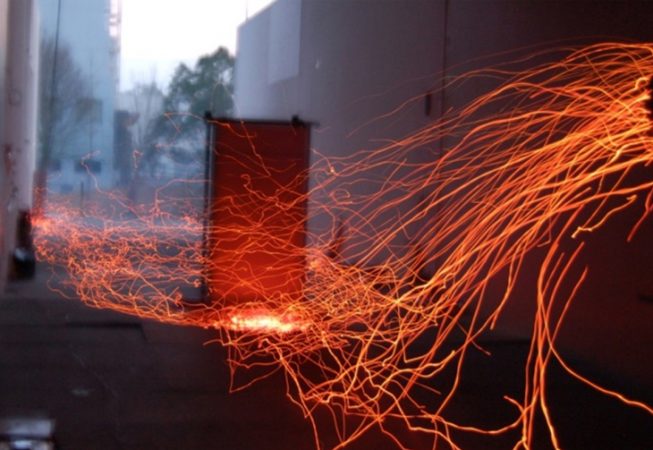Wilder wildfires? Computing helps predict their path and fury
From river jumpers to ‘firenadoes,’ why wildfires prove a challenge to understand and forecast
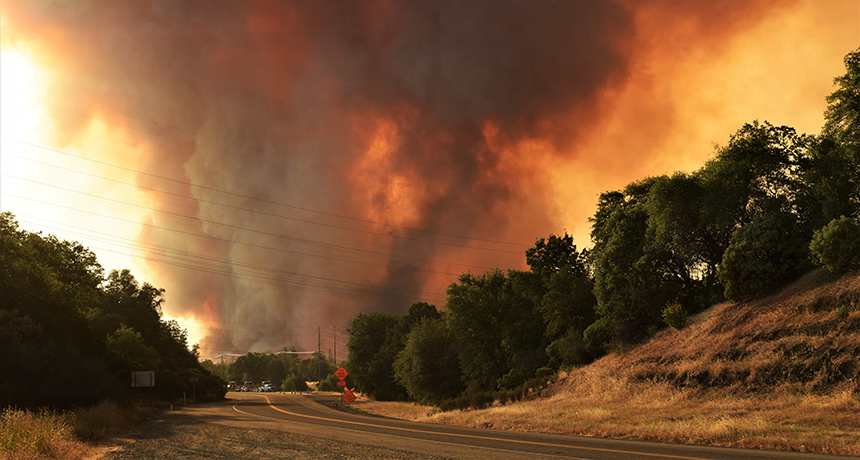
The Carr Fire burned 930 square kilometers, destroyed more than 1,000 buildings and killed seven people during the summer of 2018. That made it one of the most destructive wildfires in California history.
Eric Coulter, Bureau of Land Management/Flickr
Wildfires are not known for their restraint. They’ll jump rivers. They’ll spew whirling dervishes of flames. And they’ll double in size overnight.
Take the Carr Fire, one of the most destructive California has ever seen. It sparked in the northern part of the state on July 23. Its source: the rim of a flat tire scraping a road’s pavement. As the blaze grew, it jumped the Sacramento River. Then it set off a flaming whirlwind near Redding that trapped and killed a firefighter. Crews didn’t fully contain the flames until August 30. By then, this wildfire had torched 930 square kilometers (359 square miles). Along the way, it destroyed more than 1,000 buildings and claimed seven lives.
“Once these fires are spreading fast enough and intensely enough, you can’t stop them,” says Ruddy Mell. He’s a combustion engineer with the U.S. Forest Service based in Seattle, Wash. (A combustion engineer is someone who studies how things burn.)
Federal and state agencies that manage wildfires rely on math to do their work. These agencies use computer programs known as fire models. Such models make it possible to predict how blazes will spread. They also allow the agencies to decide where to send firefighters and equipment — or to decide when an evacuation is needed. But the models can’t always predict when a fire will veer in a new direction or grow suddenly larger.
Now, scientists are developing newer, far better fire models. Those models include especially detailed data from satellites.
The newer computer models also are based on a better understanding of how fires can create their own weather, fanning their own flames.
Even on a computer, these fine-scale models take hours or days to run. That means they aren’t likely to replace more quick-and-dirty models created to respond in the heat of the moment. But they can help scientists figure out what’s driving a wildfire’s behavior — and learn how to better protect communities from going up in smoke.
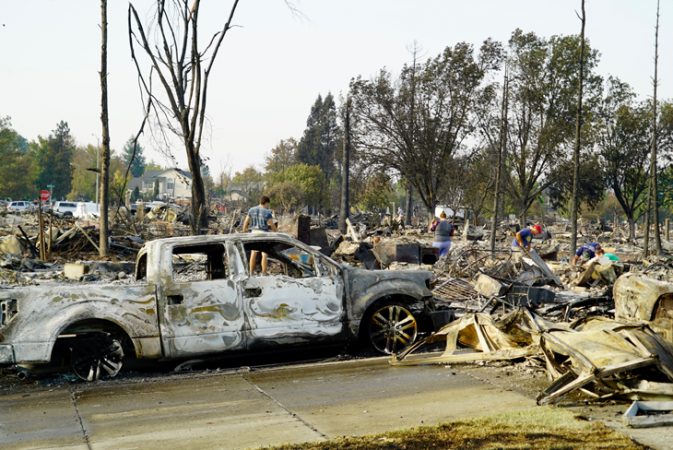
Record burns
The National Interagency Fire Center (NIFC) is in Boise, Idaho. This year, it reports, wildfires are on track to cause at least as much damage in the United States as did last year. Indeed, those blazes burned a bigger area in 2017 than in almost any year since 1983. (That’s when researchers first began collecting consistent data.) As of September 24, 2018, 48,584 fires had torched at least 29,800 square kilometers (11,500 square miles) nationwide. That’s an area larger than Massachusetts. As of late September, NIFC reported more than 50 large fires burning in the West — 20 of them still uncontained.
In the past few years, wildfires have made extreme air pollution even worse in the western United States.
Lightning sparks many wildfires. These natural blazes are a healthy part of many ecosystems. But without meaning to, humans have made such fires worse. For years, experts who manage forests have worked hard to prevent natural fires from burning. That’s known as fire suppression. This policy has meant that there’s a lot of wood — a fire’s fuel — on the ground. And that’s made the fires that do ignite even more fierce.
Most disturbing, people start — whether accidentally or on purpose — 84 out of every 100 wildfires. That’s according to a March 2017 study in the Proceedings of the National Academy of Sciences. Our influence, the study suggests, has made the U.S. fire season three times as long as it would be naturally.
And climate change is likely worsening the problem. Much of the western United States will probably see an increase in the area of land burned over the next 30 years. That’s the finding of a December 2017 study in PLOS One. It had analyzed data on regional temperatures, wildfires and snowpacks. (Snowpack is the buildup of layers of snow during cold periods.)
Such natural disasters will be even more severe in the future, researchers suggested last month in Geophysical Research Letters. They concluded that heat waves and wildfires will be affected even more strongly by shifts in climate that come in cycles. A key example of those cyclic events: El Niños (El-NEEN-yohs). These are periods when surface waters around the equator in some areas of the Pacific Ocean warm, triggering shifts in climate across the globe.
Using math to model wildfire behaviors, though, is almost as hard as stopping the burn. Wildfires are influenced by a complex group of features. What types of plants cover the ground? Is the land flat or hilly? How fast does the wind blow? How hot is the region and how dry are its plants?
Fire managers take all of these into account. But the models they use are designed to guide fire control strategies during emergencies, where being able to respond fast is key. The math it uses cannot model all of the fine details. For example, it can’t take into account how fires interact with the atmosphere to create their own winds. That’s important, since those winds can blow flames and spit embers in unexpected directions.
Fire weather
Of course, gathering data about how fires interact with the atmosphere poses big challenges. “It’s pretty much impossible to set up instruments right next to a high-intensity wildfire,” says Warren Heilman. He’s a Forest Service meteorologist in Lansing, Mich. Why? Because it would destroy the tools.
That’s where a new prediction method comes in.
The National Center for Atmospheric Research is in Boulder, Colo. There, atmospheric scientist Janice Coen and her colleagues have developed a new model to predict a fire’s impact on weather.
It starts by studying how air moves when it’s heated by a fire, and how that motion then affects how a fire may behave. Explains Coen, it “boils down to complex math and fluid dynamics.” (Fluid dynamics refers to how liquids and gases move.) Get these things right, she says, and “a lot of this horribly complex behavior unfolds.”
The model relies on the math already used to forecast weather generally. Coen’s team is now applying it to wildfires. Coen’s team recently used it to study what happened during the 2014 King Fire. That blaze burned almost 400 square kilometers (154 square miles) in California’s Sierra Nevada Mountains.
The fire had been traveling fairly slowly. Suddenly, it raced 25 kilometers (about 15 miles) up a canyon in just 11 hours. Its ferocity was puzzling because a nearby weather station had noted the winds were calm at that time.
Dry conditions had left the landscape parched so that it burned easily. News reports quickly blamed the fire’s speed up on that drought. But Coen wasn’t so sure.
Her analysis, in fact, suggested drought had not been the key driver of the fire’s sudden growth in intensity.
Instead, her team would show, air currents created by the fire itself had fueled the fire’s fast spread up the canyon. Differences in atmospheric pressure create winds, which are masses of air that flow from areas of higher pressure to ones having lower pressure. When the fire warmed the air in the canyon, it lowered it pressure. The air now expanded and rose. That, in turn, created winds far stronger than the official measurements that had been taken nearby.
Coen’s team reported these findings in the May issue of Ecological Applications.
Such models also can help explain other surprising fire events. One example is the “firenado” whipped up this past July 26 by the Carr wildfire. That vortex generated winds exceeding 200 kilometers per hour (124 miles per hour) and temperatures of up to 1,500° Celsius (2,732° Fahrenheit). Such flaming whirlwinds form when the rising air heated by a wildfire collides with the turbulent air around it.
These detailed fire models offer clues on how to manage future fires. In analyzing the King Fire, for example, Coen’s team found that the amount of brush (and how dry it was) influenced the fire’s spread rate only on sloped ground. That suggests that, given limited resources, brush-clearing efforts might be most useful for slowing fire spread when the work is focused more on hilly sites, not flatlands.
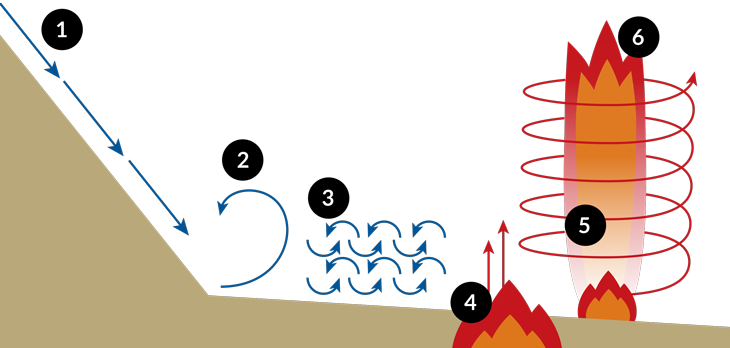
Remember the embers
Coen’s model looks at the weather that wildfires cook up. Other models seek instead to understand what happens when wildfires butt up against urban areas, which then threatens buildings.
How fires behave at this wildland–urban border is far less well understood than the fires that blaze inside buildings or on open land, says Mell, that combustion scientist with the Forest Service. These borderlands fires also are harder to study. One reason: wildland fires that move into urban areas have access to a broader range of fuels than do blazes in some remote forest. Plus, these wildfires usually ignite multiple buildings. That creates a domino effect, which usually isn’t an issue with, say, a standard house fire.
The October 2017 Tubbs Fire hit California’s wine country hard. Afterward, Mell visited a charred neighborhood outside of Santa Rosa. Fire control experts had not viewed this suburb as facing a high fire risk. And indeed, the wildfire’s flame front never reached this community. But it didn’t protect it from devastation. Its destruction came entirely from firebrands — chunks of burning trees, plants and debris — that blew in on strong winds. Firebrands can pile up and ignite buildings. These burning buildings can then generate their own firebrands. Before long, “it’s very difficult to stop,” Mell says.
How buildings are arranged, what they’re made of and which trees and other plants were growing around a community can all affect its vulnerability to wildfires. Exactly how, however, remains unclear. To figure out how those pieces fit together, Mell, like Coen, studies the physics of fire. But his team’s focus isn’t on the way that fires influence air movement over kilometers. It looks at how they burn on the scale of meters (yards).
He’s designing sets of math equations that model how a firebrand will transfer its heat to a surface, or how fuels burn under certain temperature conditions.
The larger goal of such work is to better understand the hazards that come from blowing embers. That way, fire-prone towns can be designed and managed as safely as possible.
These models of the wildland–urban boundary depend on data from lab experiments that test how embers fly and burn. Firebrands are different from other projectiles. That’s because they’re burning up as they fly, explains Sam Manzello. He’s an engineer at the National Institutes of Standards and Technology, or NIST, in Gaithersburg, Md.
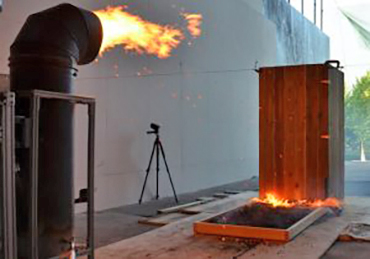
A firebrand’s density is constantly changing. And that affects how it will shoot out or blow through the air. What’s more, torched vegetation produces firebrands that behave differently than those from burning buildings.
Some of Manzello’s work involves collecting embers after a fire and studying their properties. He pays attention to how big they are, what they’re made of and how much they weigh. His team also has built several “dragons.” These aren’t alive, but devices with fire in their bellies. They feed on woodchips and then spit showers of embers. Scientists at NIST can control the size of the woodchips ignited in a dragon’s belly. They also can control how quickly its mouth spits out embers. This should help the NIST team pinpoint how the design or materials used in construction might affect how vulnerable a building will be to fire.
For example, roofs made of ceramic (Sur-AM-ik) tile are popular in California. It would seem they should be fireproof because the ceramic does not burn. But, Manzello reports, “We’ve found out that when we expose tile roofs to firebrand showers, [firebrands] penetrate under the tiles and [ignite] the roof.” Embers also pose a risk. Those that land on these roofs can burn until they become small enough to fit through cracks between the tiles.
Such discoveries, he says, are helping communities upgrade their safety standards for buildings in towns that border wildlands. These newer standards may require the installation, say, of roofing tiles atop combustion-proof materials or the use of materials to plug gaps between tiles.
Clearly, wildfires are important and complex. But with science and math, researchers are finding better ways to predict the behaviors of the blazes that periodically develop — and how to better build those towns that may one day find themselves in a fire’s path.
